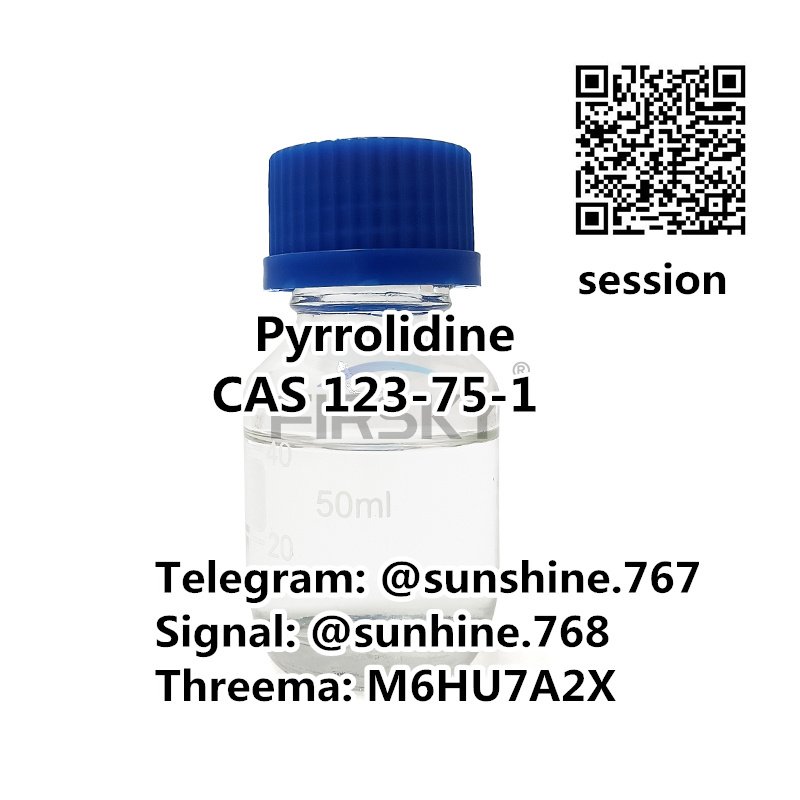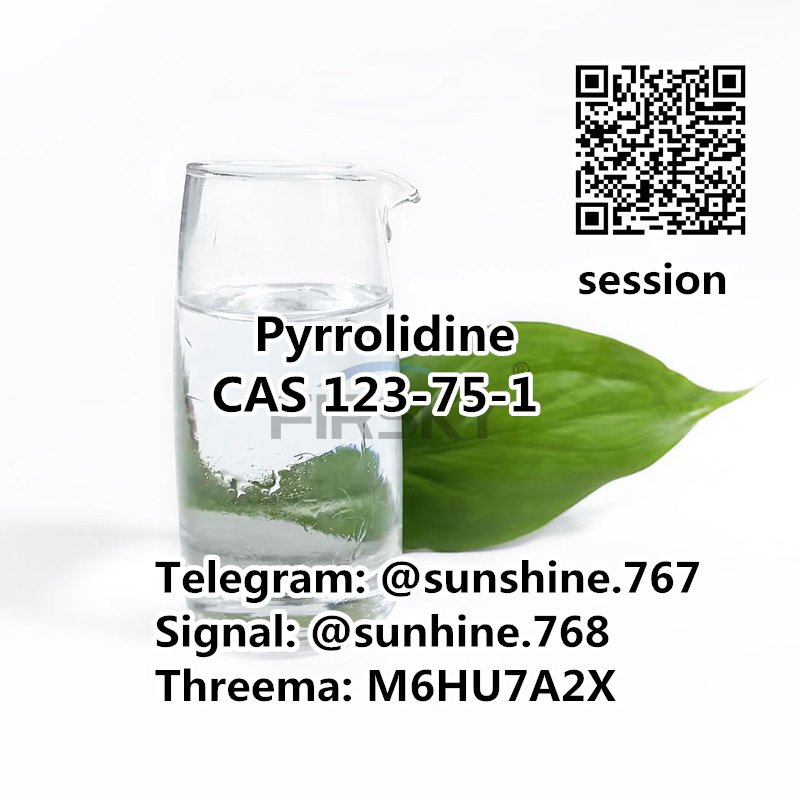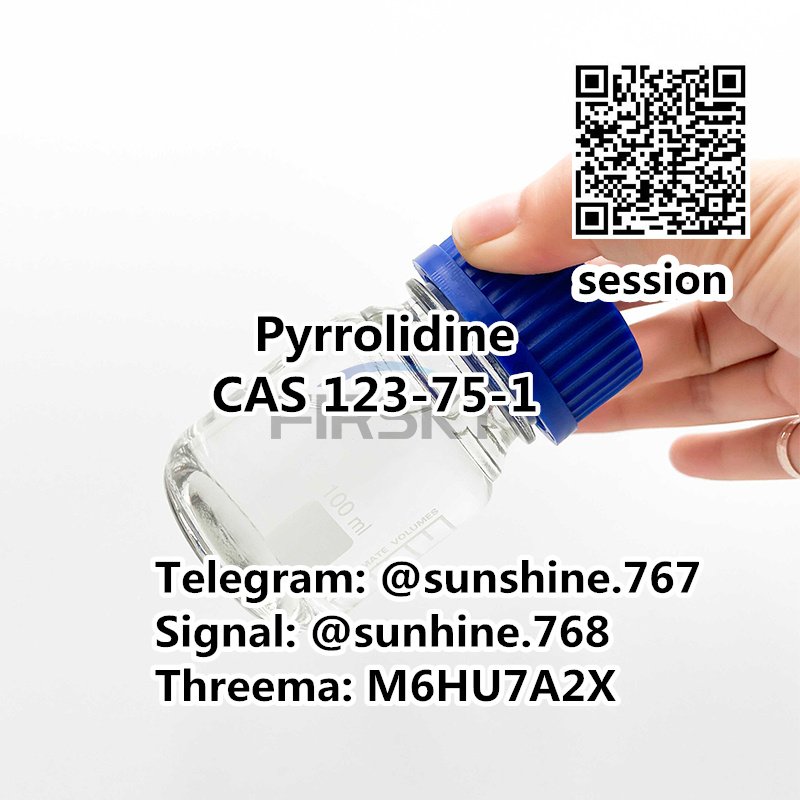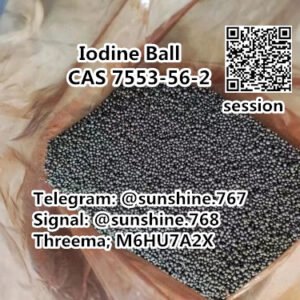CAS 123-75-1 Pyrrolidine are present in both natural and synthetic drugs, as well as in drug candidates. The pyrrolidine ring structure is a common feature in numerous natural alkaloids and serves as the foundational structure for racetam compounds. Additionally, the amino acids proline and hydroxyproline can be considered structural derivatives of pyrrolidine.
Pyrrolidine CAS 123-75-1
| Product Name: | Pyrrolidine |
| Synonyms: | TETRAMETHYLENEIMINE;tetrahydropyrrole; |
| CAS NO: | 123-75-1 |
| Molecular Weight: | 71.121 |
| Molecular Formula: | C4H9N |
| Boiling Point: | 89.5±8.0 °C at 760 mmHg |
| Melting point: | -63 °C |
| Density: | 0.8±0.1 g/cm3 |
| Appearance: | Colorless transparent liquid |
| Solubility: | Stable; flammable. Incompatible with strong acids, strong oxidizing agents. |
| Storage: | Store in an airtight seal away from light. Packed in galvanized iron drums. The warehouse is cool and ventilated, keep away from fire, fire source, sunscreen, acid and oxidant. |
Pyrrolidine Uses
Pyrrolidine is a versatile compound with various applications across different industries. Let’s explore its uses using transitional words to enhance the flow of information:
1. In the pharmaceutical industry, pyrrolidine serves as a vital building block for the synthesis of various medications. It acts as a key intermediate, allowing for the production of antipsychotics, antihistamines, and anticonvulsants.
2. Additionally, pyrrolidine finds application in the agrochemical sector. Its derivatives are extensively utilized in the development of pesticides and herbicides, effectively controlling pests, diseases, and weeds.
3. Moreover, pyrrolidine plays a significant role in the polymer industry. As a monomer, it contributes to the production of polymers and copolymers. These versatile materials are widely employed in adhesives, coatings, and plastics.
4. Pyrrolidine also finds use as a solvent, particularly in chemical reactions and processes requiring a polar and high-boiling medium.
5. In the rubber industry, pyrrolidine derivatives act as accelerators during the vulcanization process. They facilitate the cross-linking of rubber molecules, enhancing strength and durability.
6. Within the dye and pigment industry, pyrrolidine derivatives serve as crucial intermediates. They contribute to the coloration of various products, including textiles, paints, and inks.
7. Additionally, pyrrolidine holds significance in research and development. Researchers employ it as a valuable reagent in organic chemistry studies. Its involvement in cyclizations, ring formations, and functional group transformations enables the synthesis of complex organic compounds.
Remember to handle pyrrolidine and its derivatives with caution, following proper safety protocols. Adhering to appropriate handling, storage, and disposal guidelines ensures a safe working environment when dealing with pyrrolidine or any chemical compound.
Good Feedback from Customer

Pyrrolidine Reaction With Ketone
Cyclohexanone reacts with pyrrolidine in the presence of p-toluenesulfonic acid catalyst to produce 1-(1-pyrrolidinyl)cyclohexene. The enamine reacts with a primary alkyl halide, e.g. ethyl bromide to form an alkyliminium ion, which gets hydrolyzed to the ketone on workup with aqueous acid.
Pyrrolidine Smell
Pyrrolidine has a penetrating amine-type odor, reminiscent of ammonia and piperidine. It is easy to turn yellow when exposed to light or humid air, easily soluble in water and ethanol. It is nauseating and diffusive.
N-Pyrrolidino Etonitazene
N-pyrrolidino etonitazene is a benzimidazole derivative with potent opioid effects which has been sold over the internet as a designer drug and linked to numerous cases of overdose
Pka Of Pyrrolidine CAS 123-75-1
![]()

Telegram: @sunshine767
Signal/whatsapp: +(852)51807114
Threema: M6HU7A2X
Element: @sunshine767:matrix.org
Session: 053e1ce88cb18b3f3ea2a3c830116f51bd4d932fefd38ac9b66525bf71a7177d79
Products Website: https://bk4-49851-31-2.com















Reviews
There are no reviews yet.